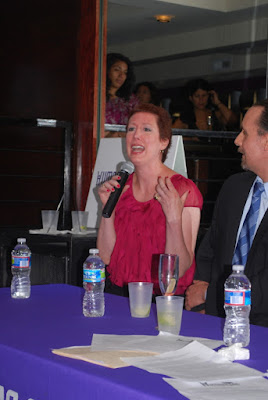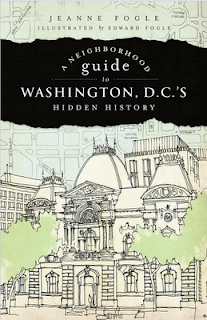DC Community Heritage Project Teaches Local Students the Historical Value of Cemeteries
DCCHP Intern Bridget Sullivan made a site visit to learn more about one of this Summer's grantee projects, "Living Images in My World: A History Beneath Us - Forgotten Ground Across the River Creek." The project, sponsored by the Columbia Heights Youth Club in partnership with I Saw! The Experience of Learning in DC, uses cemeteries to teach students about local history, and primary source research. In this article Sullivan recounts her experience spending the day with the students and staff.
 |
| From the Historical Marker Database |
Yesterday I had the opportunity to join I Saw! The Experience of Learning in DC for the day during their summer program, A History Beneath Us-Forgotten Sacred Ground Across the River Creek. During the four week program, junior high students work with high school leaders to research and create a documentary to restore the identities of African-Americans buried in the Old Methodist-Mount Zion and Female Union Band Cemetery. The students have delved into the history of those interred in the cemetery, and the rich history of the surrounding location. Most of the research has been done with the help of educational partners within the DC community.
My experience with the program began with a bus tour of the area surrounding the cemetery led by historian, Dr. C. R. Gibbs. Gibbs introduced a number of important African-American heritage sites in the immediate vicinity of the cemetery. This dynamic tour was educational, enlightening, and kept everyone moving despite the summer heat. The students had the opportunity to learn the significance of the cemetery and its residents in the context of the historic greater Georgetown neighborhood.
After an impromptu visit to Dumbarton House, an historic house museum near the cemetery, the students had the opportunity to speak with Mr. Neville Waters. Mr. Waters discussed the continuing work of the Afro-American Bicentennial Corporation to restore the cemetery. The AABC fought to save the cemetery in the 1970s against a movement to remove the graves to other locations in order to make room for residential construction in the area. It successfully argued for the historical significance of the site and began the work to clean and restore the cemetery.
Following this discussion, the students visited the cemetery, poured libations in memory of those buried there, and placed flowers on the graves. Overall, this was a great experience and showed great potential for the final documentary. The students are taking full advantage of these unique opportunities to learn about their heritage within the DC community.








